Introduction
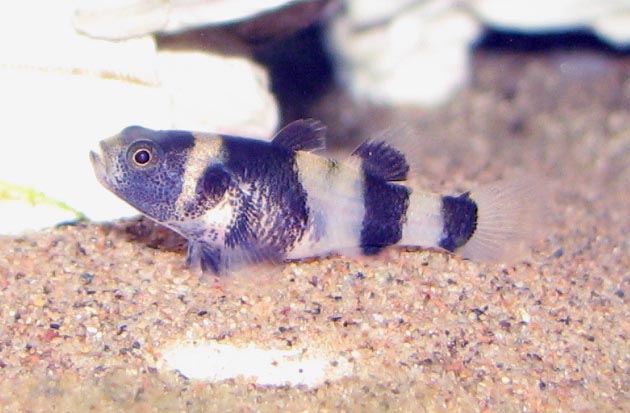
Brachygobius doriae is one of the few species of true gobies commonly found in the hobby. Described by the British zoologist Albert Günther in 1868 its small size, bright colours and endearing habits make it a popular purchase.
Distribution and Availability
The bumblebee goby is found in fresh and brackish waters in Indonesia, Malaysia and Brunei. It’s available from most good fish shops all year round.
Description
A small fish that, like all true gobies is adapted for a life spent on the substrate. Lacking a swim bladder and with fused pelvic fins they spend their days guarding their little patch of dirt or shell looking permanently grumpy. A chunky body married to broad vertical black and yellow bands mean the comparison with a bumblebee is irresistible. In breeding colouration the black on the males fades to silver and the yellow becomes reddish. Females show a bright yellow collar.
Male – up to 2.5cm.
Female – up to 3cm. Deeper bodied and larger than male.
There are several species in the genus Brachygobius and there has been much confusion as to the actual species sold in the hobby. The following key to the genus confirms that the species commonly available (at least in the UK) is indeed B. doriae.
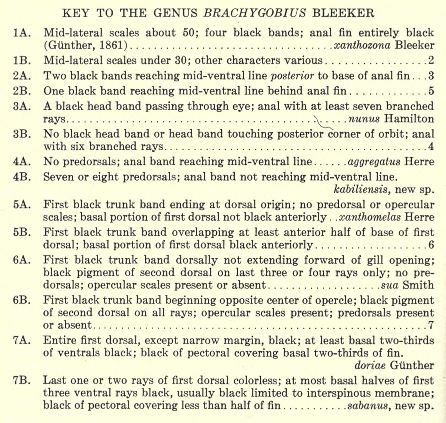
Requirements
Not an easy fish to care for and will not thrive in a community tank. Keep in a species tank or with other peaceful fish that have the same requirements. Many reference have this species as a brackish water fish but I kept and bred mine in entirely fresh water.
- Tank size: 45cm minimum.
- Decoration: Coral sand substrate with some hiding places such as clay pipes and shells. Shells are used for spawning.
- Temperature: 22 – 28oC
- pH: 7.0 – 8.0
- Hardness: 8 – 20 dH
Feeding
Will much prefer to eat live food although some reports claim the species will eat frozen foods. Newly hatched brine shrimp, Grindal worms, daphnia and other such live foods are essential to keep these fish long-term. I managed to get them to accept ZM200 granular food which they ate as it gradually drifted down through the water column. Once on the substrate it was ignored and had to be removed.
Breeding
If these fish are kept in the correct conditions and fed a variety of live foods breeding will be straightforward. Males will claim a shell or similar cave as their own and attempt to entice a female to spawn. When in breeding condition the males change colour and display to any passing females. Responsive females will follow the male into the shell and 100-200 eggs will be laid. The male will guard the eggs for several days before the fry hatch and become free-swimming. If possible the shell can be removed to another tank (complete with male inside) to allow the fry to hatch out in safety as adults will predate the newborn young. As soon as the fry emerge return the male to the adult’s tank.
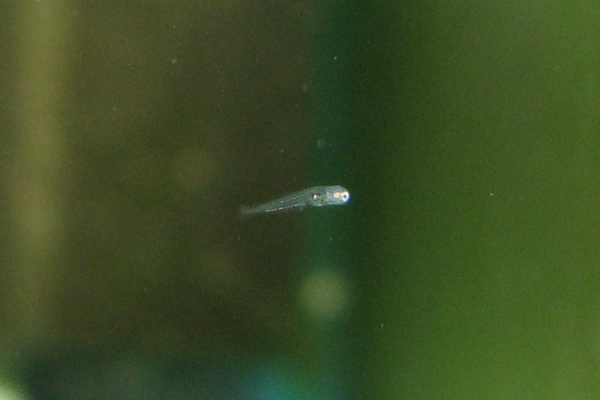
Fry are very small and will swim in the water column looking for very small food. First food should be infusoria, paramecium or small rotifers. Newly hatched brine shrimp and vinegar eels will be eaten from about a week onwards.
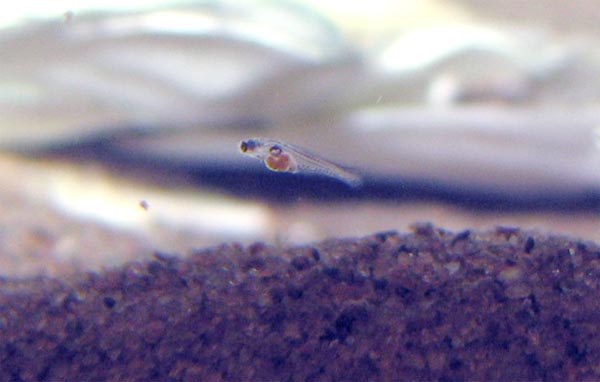
From about 3 weeks the fry will start to develop colour and lose buoyancy as the larval swim bladder is absorbed. Over a few days they will settle on the bottom and begin life as a typical goby.
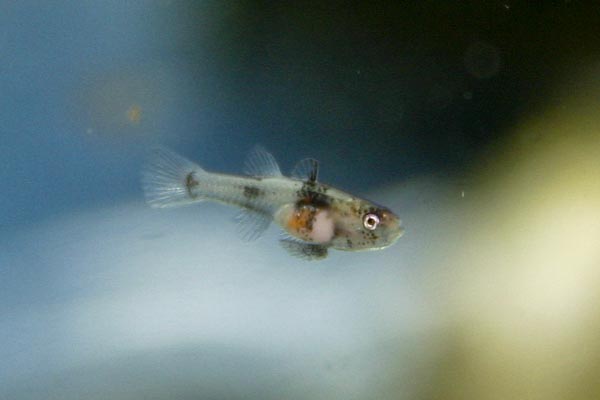
By 2 months of age they are exact copies of adult gobies albeit in miniature. By 3 months they are large enough to move on at auctions and to trade with other fish-keepers.
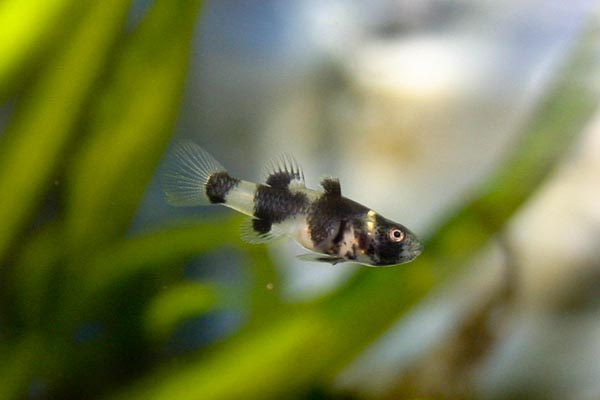
Summary
Brachygobius doriae is a small fish that is both full of character and lovely to look at. It requires specialist care and is not a fish for the beginner. For those fish-keepers who are willing to culture live food and have a tank they can devote to just this species then they make an interesting and rewarding breeding project.
References
- Notes on fishes of the genus Brachygobius – Fieldiana Zoology, Chicago Natural History Museum (Robert F. Inger 1957)
- Fishbase – species summary
LikeLike
LikeLike